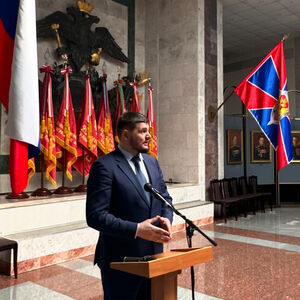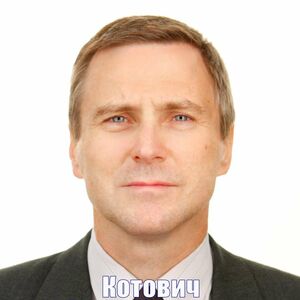Диссертация (1098795), страница 36
Текст из файла (страница 36)
Moore, S. A., Zoellner, L. A. Overgeneral autobiographical memory and traumatic events:an evaluative review //Psychological bulletin. 2007. Vol. 133(3). P. 419-437.314. Nash M.R. What, if anything, is regressed about hypnotic age regression // PsychologicalBulletin. 1987. Vol.102. P. 42 – 52.315.
Nash M. R., Barnier A. J. (eds.) The Oxford Handbook of Hypnosis: Theory, Research,and Practice. Oxford Press. 2012. 816 p.316. Nash M.R., Lynn S.J., Stanley S., Frauman D., Rhue J. Hypnotic age regression and theimportance of assessing interpersonally relevant affect // International Journal of Clinicaland Experimental Hypnosis. 1985. Vol. 23. P. 224 – 235.317. Neisser U. Snapshots or benchmarks? In Memory Observed: remembering in NaturalContexts (ed. U. Neisser). San Francisco: W.N. Freeman & Co. 1982. P.
44 – 48.318. Neisser U., Harsch N. Phantom flashbulbs: false recollections of hearing the news aboutChallenger / E. Winograd, & U. Neisser (eds.), Affect and accuracy in recall: Studies of‘flashbulb’ memories. New York: Cambridge University Press. 1992. P. 9 – 31.319. Nelson, K., Fivush, R. The emergence of autobiographical memory: a social culturaldevelopmental theory // Psychological review. 2004. Vol. 111(2). P 486.320.
Neumann A., Blairy S., Lecompte D., Philippot P. Specificity deficit in the recollection ofemotional memories in schizophrenia // Consciousness and Cognition: An InternationalJournal. 2007. Vol. 16(2). P. 469 – 484.321. Neuschatz J., Lynn S. J., Benoit G., Fite R.
Hypnosis and memory illusions: aninvestigation using the Deese / Roediger and Mc Dermott paradigm // Imagination,Cognition, and Personality. 2003. Vol. 22. P. 3 – 12.322. Niedzwienska A. Goal- directed fantasy does not explain the training effect of the CarletonSkills Training Package // International Journal of Clinical and Experimental Hypnosis.2000. Vol. 48. P. 404 – 416.323. Nourkova V.
Ontogenesis of autobiographical memory in the light of J. Piaget theory //15th Advanced Course of the Jean Piaget Archives. Abstracts. Genève. 1998. P. 54– 55.157324. Nourkova V., Bernstein D. M., Loftus E. F. Altering traumatic memory // Cognition andEmotion. 2004. Vol. 18 (4). P. 575 – 585.325. Nourkova V., Mitina O. Double echo of blowing up: recollections about the terroristattacks at 1999 (Moscow) and 2001 (New-york city) before and after capturing of hostagesat Dubrovka theatre center // International Journal of Psychology.
2004. Vol. 39(5– 6). P.375.326. Oakley D.A. Hypnosis and consciousness: a structural model // Contemporary Hypnosis.1999. Vol. 16. P. 215 – 223.327. Oakley D.A., Ward N.S., Halligan P.W., Frackowiak R.S.J. Differential brain activationsfor malingered and subjectively ‘real’ paralysis / P.W. Halligan, C. Bass and D.A. Oakley(eds.) Malingering and Illness Deception. Oxford: Oxford University Press.
2003. P. 267 –284.328. Oakley, D.A. Hypnosis and conversion hysteria: a unifying model // CognitiveNeuropsychiatry.1999. Vol. 4. P. 243 – 265.329. Orme-Johnson D.W., Barnes V.A. Effects of the Transcendental Meditation technique onTrait Anxiety: A Meta-Analysis of Randomized Controlled Trials // Journal of AlternativeComplement Medicine.
2013. Vol. 19(10). P. 1 – 12.330. Orne E. C., Whitehouse W. G., Dinges D. F., Orne M. T. Memory liabilities associatedwith hypnosis: Does low hypnotizability confer immunity? // International Journal ofClinical and Experimental Hypnosis. 1996. Vol. 44. P. 354 – 369.331. Orth U., Robins R. W., Widaman K. F. Life-span development of self-esteem and itseffects on important life outcomes // Journal of personality and social psychology. 2012.Vol. 102(6). P. 1271.332. Ost J., Wright D. B., Easton S., Hope L., French C. C.
Recovered memories, satanic abuse,dissociative identity disorder and false memories in the UK: A survey of clinicalpsychologists and hypnotherapists // Psychology, Crime & Law. 2013. Vol. 19. P. 1 – 19.333. Pasupathi M., Mansour E., Brubaker J. R. Developinga life story: Constructing relationsbetween self and experience in autobiographical narratives // Human Development. 2007.Vol. 50. P. 85 – 110.334.
Pasupathi М., Carstensen L. Age and emotional experience during mutual reminiscing //Psychology and Aging. 2003. Vol. 18. P. 430 – 442.335. Peterfreund E. Some critical comments on psychoanalytic conceptualizations of infancy //International Journal of Psycho-Analysis. 1978. Vol. 59. P. 427 – 441.158336. Pezdek K., Blandon-Gitlin I., Gabbay P. Imagination and memory: Does imaginingimplausible events lead to false autobiographical memories? // Psychonomic Bulletin &Review. 2006. Vol. 13 (5). P. 764 – 769.337.
Pezdek K., Finger K., Hodge D. Planting false childhood memories: the role of eventplausibility// Psychological Science.1997. Vol. 8. P.437 – 441.338. Pezdek K., Lam S. What research paradigms have cognitive psychologists used to study‘‘False memory’’, and what are the implications of these choices? // Consciousness andCognition. 2007. Vol. 16. P.
2 – 17.339. Pezdek K., Salim R. Physiological, psychological and behavioral consequences ofactivating autobiographical memories // Journal of Experimental Social Psychology. 2011.Vol. 47. P. 1214 – 1218.340. Piaget J. Play, Dreams and Imitation in Childhood. New York: Rutledg. 1951341. Pillemer D. B. Directive functions of autobiographical memory: The guiding power of thespecific episode // Memory.
2003. Vol. 11(2). P. 193 – 202.342. Pinto‐Gouveia, J., Matos, M. Can shame memories become a key to identity? Thecentrality of shame memories predicts psychopathology // Applied Cognitive Psychology.2011. Vol. 25(2). P. 281-290.343. Poole D. A., Lindsay D. S., Memon A., Bull R. Psychotherapy and the recovery ofmemories of childhood sexual abuse: U.S.
and British practitioners’ opinions, practices,and experiences //Journal of Consulting and Clinical Psychology. 1995. Vol. 63. P. 426 –437.344. Raffard S., D’Argembeau A., Lardi C., Bayard S., Boulenger J-P., Van der Linden M.Exploring self-defining memories in schizophrenia // Memory. 2009. Vol. 17. P. 26 – 38.345. Rainville P., Carrier B., Hofbauer R.K., Bushnell M.C., Duncan G.H. Dissociation of painsensory and affective dimensions using hypnotic modulation // Pain.
1999. Vol. 82. P. 159– 171.346. Rainville P., Duncan G.H., Price D.D., Carrier B., Bushnell M.C. Pain affect encoded inhuman anterior cingulate but not somatosensory cortex // Science. 1997. Vol. 277. P, 968 –971.347. Rainville P., Hofbauer R.K., Bushnell M.C., Duncan G.H., Price D.D. Hypnosis modulatesactivity in brain structures involved in the regulation of consciousness // Journal ofCognitive Neuroscience.
2002. Vol. 14. P. 887 – 901.348. Rao P. R., Mythili S. P. Manifest anxiety, estimation of time intervals and psychomotorspeed // Journal of Indian Psychology. 1979. Vol. 2(2). P. 114 – 117159349. Raz A. Attention and hypnosis: neural substrates and genetic associations of twoconverging processes // International Journal of Clinical and Experimental Hypnosis.
2005.Vol. 53. P. 237 – 258.350. Raz A., Shapiro T. Hypnosis and neuroscience: a cross talk between clinical and cognitiveresearch // Archives of General Psychiatry. 2002. Vol. 59. P. 85 – 90.351. Raz A., Shapiro T., Fan J., Posner M. I. Hypnotic suggestion and the modulation of Stroopinterference // Archives of General Psychiatry. 2002. Vol.
59. P. 1115 – 1161.352. Reid T., Startup M. Autobiographical memory specificity in borderline personalitydisorder: Associations with co-morbid depression and intellectual disability // BritishJournal of Clinical Psychology. 2010. Vol. 49(3). P. 413 – 420.353. Reiser, M., Nielson, M. Investigative hypnosis: A developing specialty // American Journalof Clinical Hypnosis.1980. Vol. 23.
P. 75-84.354. Relinger H. Hypnotic hypermnesia: A critical review // American Journal of ClinicalHypnosis. 1984. Vol. 26. P. 212 – 225.355. Roberts A. H., Tellegen A. Ratings of ‘trust’ and hypnotic susceptibility // InternationalJournal of Clinical and Experimental Hypnosis. 1973. Vol. 21. P. 289 – 297.356. Romero, N., Vazquez, C., Sanchez, A. Rumination and specificity of autobiographicalmemory in dysphoria// Memory, 2014. Vol.
22(6). P. 646-654.357. Rosenberg M. J. A disconfirmation of the descriptions of hypnosis as a dissociative state //International Journal of Clinical and Experimental Hypnosis. 1959. Vol. 7. P. 187 – 204.358. Rosenthal D. M. Consciousness and higher- order thought / Macmillan Encyclopedia ofCognitive Science. Macmillan Publishers Ltd. 2002. P. 717 – 726.359.
Rosenthal D. M. Consciousness and Mind. Oxford: Clarendon Press. 2005. 378 p.360. Rotaru T. S., Rusu A. A meta-analysis for the efficacy of hypnotherapy in alleviatingPTSD symptoms // International Journal of Clinical and Experimental Hypnosis. 2016.Vol. 64(1). P. 116 – 136.361. Rubinfine D.L. Reconstruction revisited: The question of the reconstruction of mentalfunctioning during the earliest months of life / S. Tuttman, C. Kaye and M.
Zimmerman(ed.) Object and Self: A Developmental Approach: Essays in Honor of Edith Jacobson.New York: International Universities Press. 1981. P. 383 – 395.362. Rusting, C. L., DeHart, T. Retrieving positive memories to regulate negative mood:consequences for mood-congruent memory // Journal of personality and social psychology.2000. Vol. 78(4). P. 737.363.
Sabrin T. R. Contributions to role – taking theory: I Hypnotic behavior // PsychologicalReview. 1950. Vol. 57. P. 225 – 270.160364. Salzberg H. C., Depiano F. A. Hypnotizability and task motivating suggestions: A furtherlook at how they affect performance // International Journal of Clinical and ExperimentalHypnosis.
















